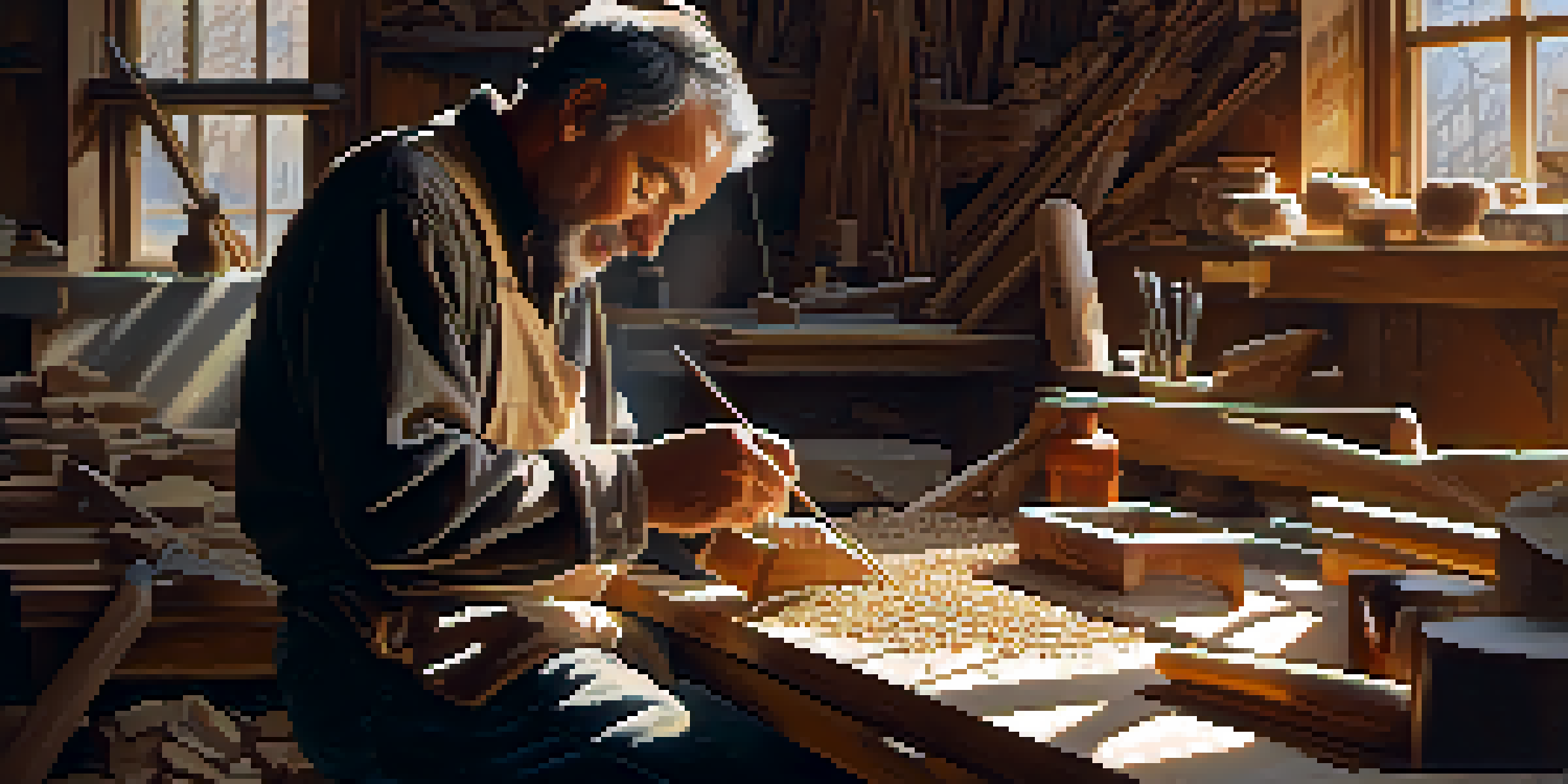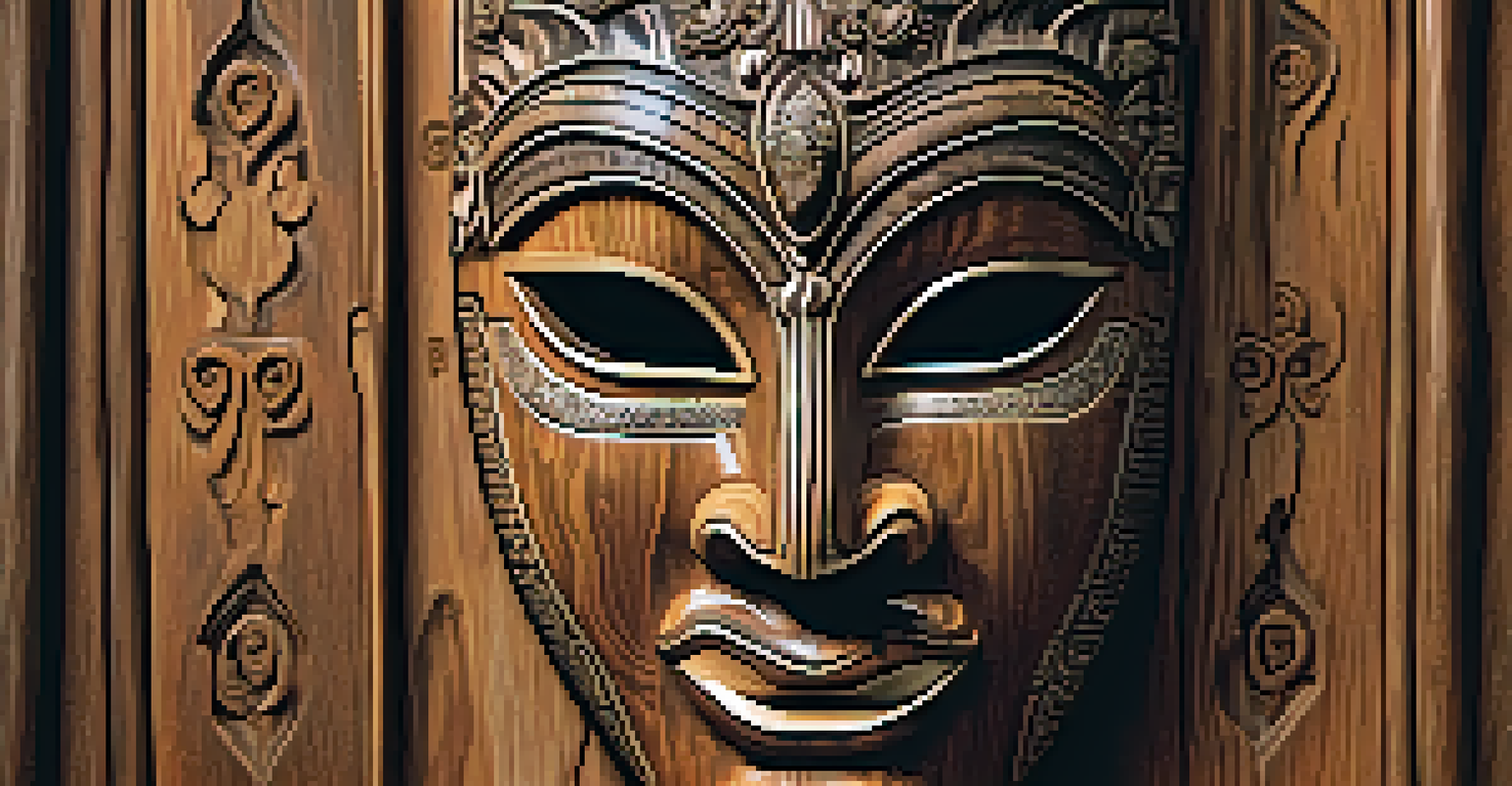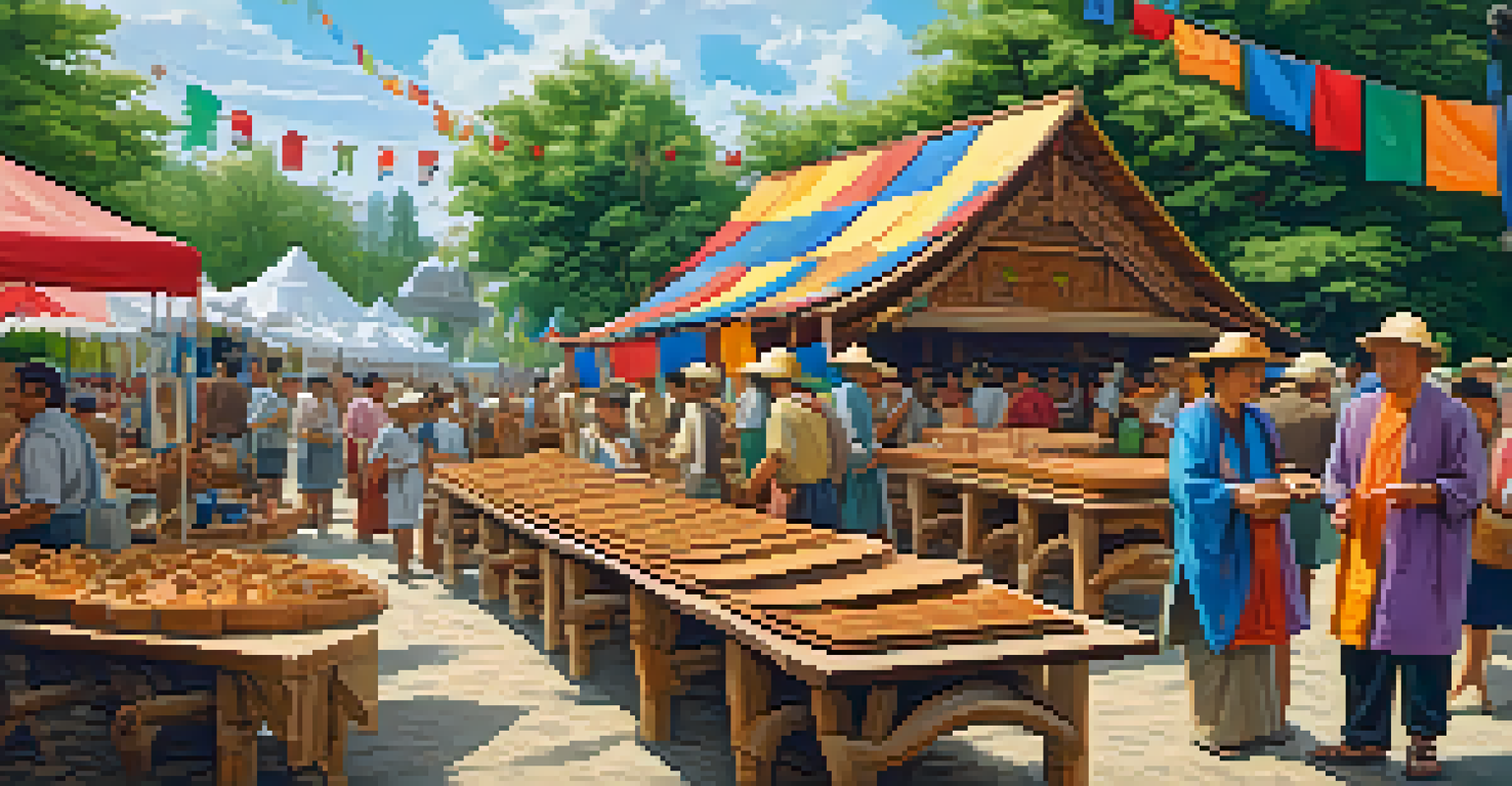The Legacy of Wood Carving: Influential Figures in History

Understanding the Art of Wood Carving and Its History
Wood carving is both an ancient craft and a form of artistic expression that dates back thousands of years. From prehistoric times, human beings have utilized available materials to create functional and decorative items. This art form has evolved across various cultures, with each society leaving its unique mark on the craft.
Every piece of wood has a story and it's my job to bring it to life.
The beauty of wood carving lies in its versatility, as artisans can transform a simple piece of wood into intricate sculptures, furniture, or religious artifacts. Techniques such as whittling, relief carving, and chip carving have been passed down through generations, showcasing the skill and patience required to master this craft. As we explore the legacy of influential figures in wood carving, we see how their contributions have shaped the art form.
In every culture, wood carving has played a significant role, from the ceremonial masks of African tribes to the ornate wooden altars of Europe. This rich history not only highlights the technical aspects of the craft but also reflects the cultural significance that wood carving holds in storytelling and spiritual practices.
The Influence of Ancient Civilizations on Wood Carving
Ancient civilizations, such as the Egyptians, Greeks, and Mesopotamians, significantly influenced the practice of wood carving. In Egypt, for instance, wood was often used for furniture and tomb artifacts, which were intricately carved to honor the deceased. The Greeks, on the other hand, focused on creating detailed sculptures that depicted their gods and everyday life.

The craftsmanship of these ancient cultures laid the groundwork for future generations of wood carvers. Their emphasis on beauty, proportion, and symbolism can still be seen in modern wood carving techniques. By studying their work, contemporary artisans can draw inspiration and continue the legacy of these ancient masters.
Cultural Significance of Wood Carving
Wood carving reflects cultural heritage and plays a vital role in preserving traditional narratives and values.
Moreover, the spread of trade routes allowed for the exchange of ideas and techniques between civilizations. As a result, wood carving became a blend of various artistic styles, enriching the craft and ensuring that it remained relevant throughout history.
Notable Wood Carvers of the Renaissance Era
The Renaissance marked a turning point in the art of wood carving, giving rise to renowned figures like Donatello and Michelangelo. Donatello, celebrated for his wooden sculptures, brought a sense of realism and emotional depth to his work. His ability to capture the human form in wood set a new standard for future artisans.
Wood carving is a way to connect with my heritage and express my identity.
Michelangelo, though primarily known for his marble sculptures, also dabbled in wood carving. His approach to form and detail influenced many wood carvers who followed. The Renaissance’s focus on humanism inspired a shift toward more expressive and individualistic styles in wood carving, pushing the boundaries of what could be achieved with this medium.
During this period, the combination of artistic innovation and technical skill transformed wood carving into a respected art form. The legacy of these masters continues to inspire modern woodworkers, reminding us of the profound impact that creativity can have on a craft.
Exploring Folk Art and Traditional Wood Carving
Folk art has always played a vital role in the wood carving tradition, with artisans often creating pieces that reflect their cultural heritage. In many regions, such as Scandinavia and Eastern Europe, wood carving was not only a practical craft but also a way to express community identity and values. The intricate designs often tell stories or symbolize important cultural beliefs.
Traditional wood carving techniques have been passed down through generations, preserving the unique styles of various cultures. These techniques are often simple yet effective, allowing artisans to create beautiful, functional pieces that honor their ancestry. For example, the use of motifs and patterns in Scandinavian wood carving serves as a link to the past, connecting the present with ancestral roots.
Evolution of Wood Carving Techniques
From ancient civilizations to modern artists, wood carving techniques have evolved, showcasing a blend of traditional methods and contemporary innovations.
Today, folk wood carving remains relevant, as many artisans strive to keep these traditions alive while incorporating modern influences. This blend of old and new ensures that the legacy of folk art in wood carving continues to flourish.
Modern Wood Carvers and Their Innovations
In recent years, the world of wood carving has seen a resurgence of interest, with contemporary wood carvers pushing the boundaries of the craft. Artists like John McGowan and David Esterly have gained recognition for their innovative techniques and unique styles. They blend traditional methods with modern aesthetics, creating pieces that resonate with today's audience.
Modern wood carvers often experiment with new tools and materials, allowing for greater creativity and expression. Techniques such as power carving have enabled artisans to work more efficiently while still achieving intricate designs. This evolution in tools has also made wood carving more accessible to new generations of artists.
As the art of wood carving continues to evolve, so does its relevance in contemporary art scenes. The innovative spirit of modern wood carvers not only pays homage to their predecessors but also challenges the boundaries of what is possible in this timeless craft.
The Role of Wood Carving in Cultural Preservation
Wood carving is not just an art form; it serves as a vital tool for cultural preservation. Through the creation of traditional pieces, artisans keep their cultural narratives alive, passing down stories and techniques to future generations. This connection to heritage ensures that the significance of wood carving is acknowledged and celebrated.
In many indigenous cultures, wood carving is integral to rituals, ceremonies, and storytelling. The carvings often carry deep meanings, representing beliefs and values that have been held for centuries. By continuing these practices, wood carvers contribute to the survival of their culture in an ever-changing world.
Influence of Key Historical Figures
Influential wood carvers from the Renaissance, like Donatello and Michelangelo, set new standards that continue to inspire artisans today.
Today, efforts are being made to document and preserve traditional wood carving techniques globally. Organizations and communities are working together to ensure that these skills are not lost, allowing future generations to appreciate and practice this beautiful craft.
The Future of Wood Carving and Artistic Expression
As we look to the future, the art of wood carving remains vibrant and full of potential. The integration of technology and traditional techniques opens up new avenues for creativity. For example, the use of CNC machines allows artisans to create intricate designs with precision while still maintaining the handmade quality of their work.
Moreover, the rise of social media has provided a platform for wood carvers to showcase their skills and connect with a global audience. This visibility encourages collaboration and inspires innovation, as artists share their techniques and learn from one another. The community surrounding wood carving is becoming more interconnected, fostering an environment of growth and exchange.

Ultimately, the future of wood carving looks bright, as artisans continue to explore new ideas and push the limits of their craft. The legacy of wood carving, shaped by influential figures throughout history, will undoubtedly thrive as new generations of artists contribute their unique voices to this timeless art form.